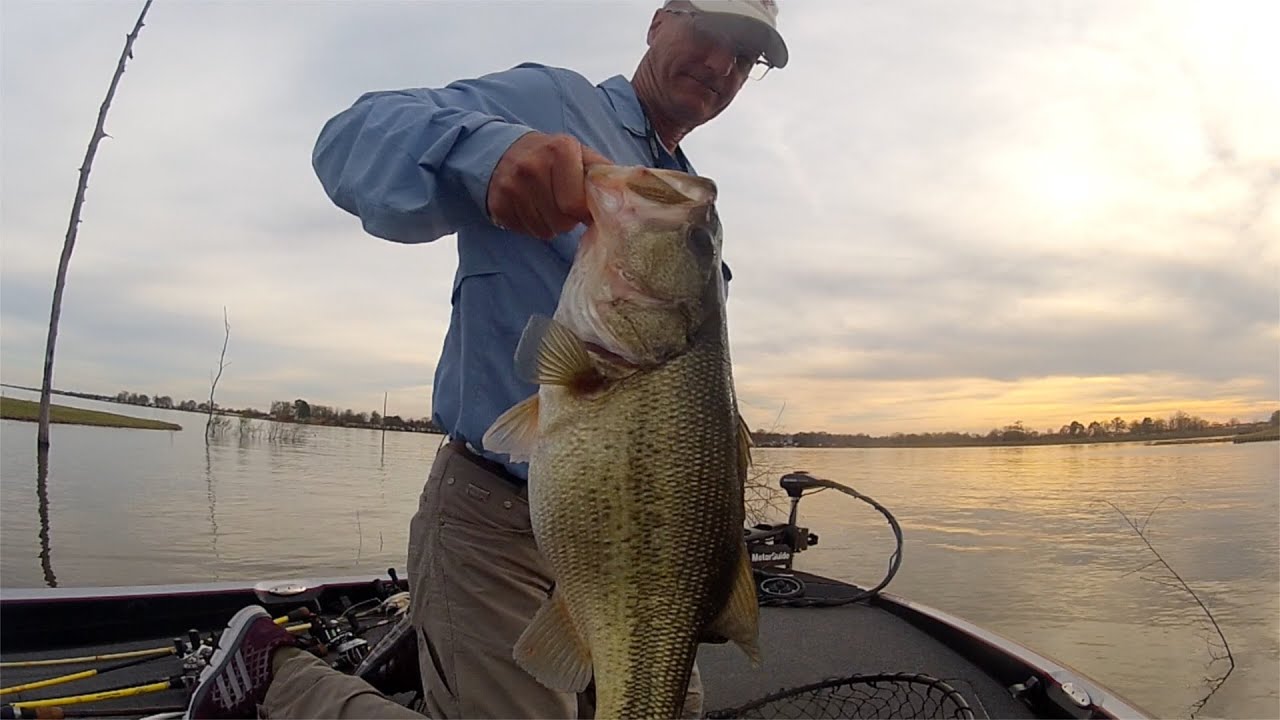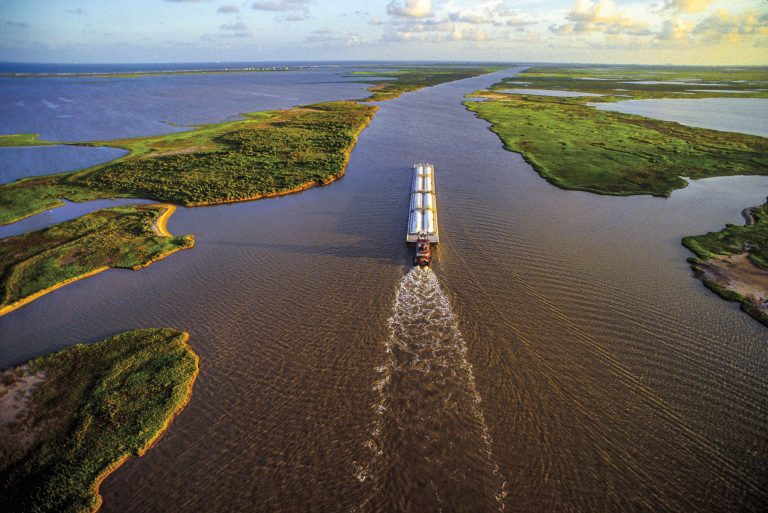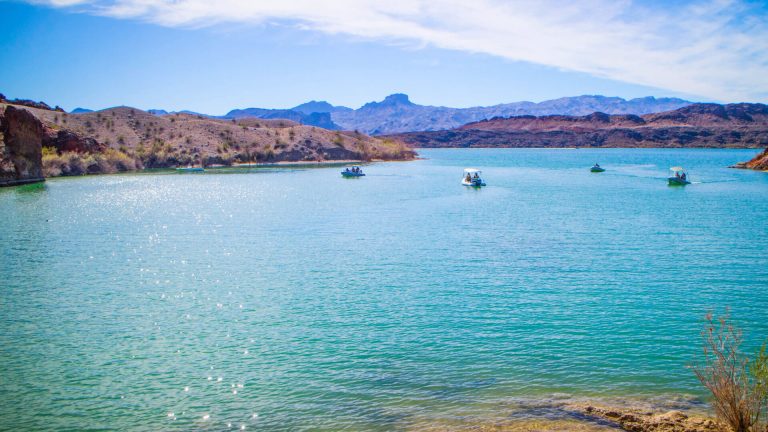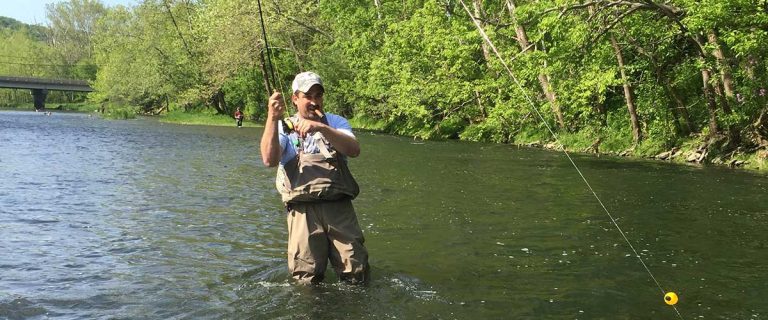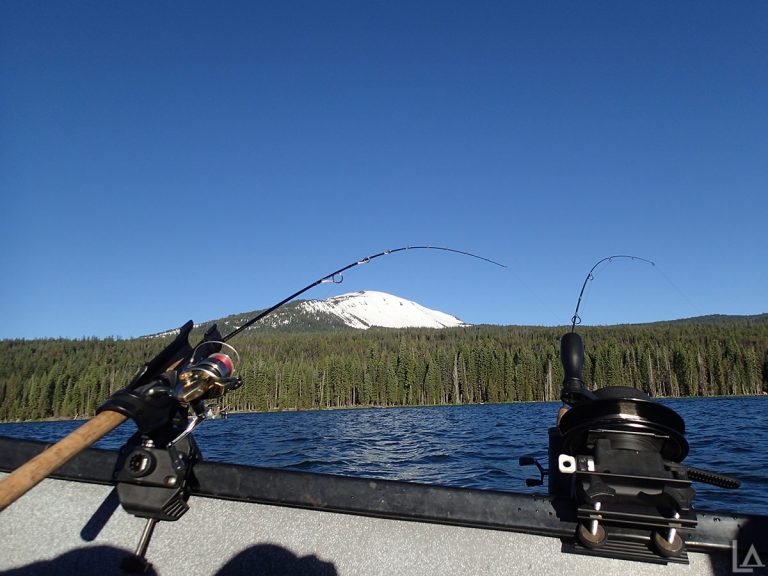Discover the best fishing destinations in the Lone Star State! From renowned bass havens to diverse coastal hotspots, Texas offers an abundance of world-class angling opportunities. In this comprehensive guide, we’ll explore the top 15 ultimate fishing spots for 2025, providing insider tips, seasonal insights, and expert advice to elevate your fishing adventures.
In a nutshell, the top 5 fishing spots covered are:
- Lake Fork – Renowned for its trophy largemouth bass and abundant vegetation.
- Sam Rayburn Reservoir – The largest lake entirely within Texas, teeming with bass, crappie, and catfish.
- Falcon Lake – An international reservoir along the Rio Grande, famous for its clear waters and record-breaking catches.
- Lake Texoma – A massive 89,000-acre reservoir straddling Texas and Oklahoma, known for its excellent striped bass fishery.
- Lake Conroe – Offering pure waters and a diverse array of species, including largemouth and spotted bass.
Whether you’re a seasoned angler or a newcomer to the sport, Texas has something to offer for every fishing enthusiast. So, grab your tackle box, and let’s dive into the ultimate fishing destinations that make the Lone Star State a true angler’s paradise.
1. Lake Fork

Location: East Texas, 65 miles east of Dallas
Size: 27,690 acres
Target Species: Largemouth bass, crappie, white bass, catfish
Widely regarded as the “Bass Capital of Texas,” Lake Fork is a premier destination for anglers seeking trophy-sized largemouth bass. This 27,690-acre reservoir, constructed in 1980, was purposefully designed to create an ideal habitat for producing massive bass, and it has delivered on that promise.
Lake Fork has yielded an astonishing 65% of the top 50 largest bass ever caught in Texas, with several exceeding the 17-pound mark. The lake’s abundant vegetation, submerged timber, and ideal water conditions provide the perfect environment for bass to thrive and grow to impressive sizes.
Best Time to Visit: Late winter through early summer is considered the prime bass fishing season at Lake Fork.
Insider Tip: Focus your efforts around areas with submerged vegetation and timber, using lures that mimic shad or crawfish. Spinnerbaits and jigs are particularly effective in these waters.
2. Sam Rayburn Reservoir
Location: East Texas, near Jasper
Size: 114,500 acres
Target Species: Largemouth bass, spotted bass, striped bass, crappie, catfish
As the largest lake entirely within Texas borders, Sam Rayburn Reservoir is a true angling paradise. Spanning over 114,500 acres, this massive body of water offers excellent opportunities for catching a wide variety of species, including largemouth bass, spotted bass, striped bass, crappie, and catfish.
Sam Rayburn is particularly renowned for its impressive bass fishery, with anglers regularly landing trophy-sized fish. The lake’s diverse habitat, including submerged timber, creek channels, and vast flats, provides ideal conditions for bass to thrive.
Best Time to Visit: Spring and fall are considered the best seasons for bass fishing at Sam Rayburn Reservoir.
Insider Tip: Explore the lake’s numerous coves and creek channels, focusing on areas with submerged structure and vegetation. Crankbaits, spinnerbaits, and soft plastic lures are effective choices for targeting bass in these waters.
3. Falcon Lake
Location: Along the Texas-Mexico border
Size: 83,654 acres
Target Species: Largemouth bass, white bass, catfish, crappie
Falcon Lake, an international reservoir shared with Mexico, is a true gem for anglers seeking exceptional bass fishing opportunities. This 83,654-acre lake is famous for producing numerous record-breaking catches, including the former world record for largemouth bass.
With its clear waters, submerged brush, and rocky outcroppings, Falcon Lake offers an ideal habitat for bass and other species. The lake’s diverse structure and abundant forage provide the perfect conditions for trophy-sized fish to thrive.
Best Time to Visit: Late winter through early summer is considered the prime bass fishing season at Falcon Lake.
Insider Tip: Focus your efforts around submerged brush piles, rocky points, and drop-offs, using lures that mimic baitfish or crawfish. Crankbaits, jigs, and Texas-rigged soft plastics are popular choices in these waters.
4. Lake Texoma
Location: Straddling the Texas-Oklahoma border
Size: 89,000 acres
Target Species: Striped bass, largemouth bass, crappie, catfish
Lake Texoma, a massive 89,000-acre reservoir straddling the Texas-Oklahoma border, is a world-renowned fishing destination, particularly for its excellent striped bass fishery. This lake is home to one of the few landlocked, self-sustaining populations of striped bass in the United States, making it a prime location for anglers targeting these hard-fighting fish.
In addition to striped bass, Lake Texoma offers excellent opportunities for catching largemouth bass, crappie, and catfish, making it a versatile fishing destination for anglers of all interests.
Best Time to Visit: Spring and fall are considered the best seasons for fishing at Lake Texoma.
Insider Tip: For striped bass, focus your efforts around rocky shorelines, points, and drop-offs, using live bait or lures that mimic shad or other baitfish. For largemouth bass, target submerged structure and vegetation with crankbaits, spinnerbaits, and soft plastic lures.
5. Lake Conroe
Location: North of Houston
Size: 21,000 acres
Target Species: Largemouth bass, spotted bass, crappie, catfish, white bass
Located just north of Houston, Lake Conroe is a 21,000-acre reservoir known for its clear waters and abundant vegetation, providing an ideal habitat for bass fishing. This lake is a popular destination for anglers targeting largemouth and spotted bass, as well as crappie, catfish, and white bass.
Lake Conroe’s diverse structure, including submerged timber, creek channels, and aquatic vegetation, offers a variety of fishing opportunities for anglers of all skill levels.
Best Time to Visit: Spring and fall are considered the best seasons for bass fishing at Lake Conroe.
Insider Tip: Focus your efforts around areas with submerged vegetation and timber, using lures that mimic baitfish or crawfish. Crankbaits, spinnerbaits, and Texas-rigged soft plastics are effective choices in these waters.
6. Choke Canyon Reservoir
Location: South Texas, near San Antonio
Size: 25,670 acres
Target Species: Largemouth bass, white bass, crappie, catfish
Situated in South Texas, Choke Canyon Reservoir is a 25,670-acre lake known for its exceptional bass fishing opportunities. This reservoir is particularly famous for producing trophy-sized largemouth bass, with many state records coming from its waters.
The lake’s diverse habitat, including submerged timber, rocky outcroppings, and aquatic vegetation, provides ideal conditions for bass and other species to thrive.
Best Time to Visit: Late winter through early summer is considered the prime bass fishing season at Choke Canyon Reservoir.
Insider Tip: Focus your efforts around areas with submerged vegetation and timber, using lures that mimic shad or crawfish. Spinnerbaits and jigs with crawfish trailers are particularly effective in these waters.
7. Lake Livingston
Location: East Texas
Size: 83,000 acres
Target Species: Catfish, crappie, largemouth bass, white bass, hybrid striped bass
As the second-largest lake in Texas, Lake Livingston is an 83,000-acre reservoir renowned for its excellent fishing opportunities, particularly for catfish, crappie, bass, and white bass. With its diverse habitat, including submerged timber, creek channels, and vast flats, Lake Livingston offers anglers a variety of fishing experiences.
Best Time to Visit: Spring and fall are considered the best seasons for fishing at Lake Livingston.
Insider Tip: Explore the lake’s numerous coves and creek channels, focusing on areas with submerged structure and vegetation. Crankbaits, spinnerbaits, and soft plastic lures are effective choices for targeting bass, while live or cut bait is a popular choice for catfish.
8. Lake Amistad
Location: Texas Hill Country, near Del Rio
Size: 64,900 acres
Target Species: Largemouth bass, striped bass, catfish, white bass
Nestled in the scenic Texas Hill Country, Lake Amistad is a 64,900-acre international reservoir shared with Mexico. This lake is known for its clear waters and diverse structure, making it a popular destination for anglers targeting largemouth bass, striped bass, catfish, and white bass.
The lake’s rocky outcroppings, submerged brush, and deep channels provide excellent habitat for a variety of species, offering anglers a diverse range of fishing opportunities.
Best Time to Visit: Late winter through early summer is considered the prime fishing season at Lake Amistad.
Insider Tip: Focus your efforts around rocky points, drop-offs, and submerged brush piles, using lures that mimic baitfish or crawfish. Crankbaits, jigs, and Texas-rigged soft plastics are popular choices in these waters.
9. Caddo Lake
Location: Texas-Louisiana border
Size: 26,800 acres
Target Species: Largemouth bass, crappie, catfish, sunfish
Located on the Texas-Louisiana border, Caddo Lake is a 26,800-acre natural lake known for its unique cypress swamp ecosystem. This lake is renowned for its excellent bass fishing opportunities, particularly for largemouth bass.
The lake’s shallow waters, submerged timber, and abundant vegetation provide ideal habitat for bass and other species, offering anglers a truly unique fishing experience.
Best Time to Visit: Spring and fall are considered the best seasons for bass fishing at Caddo Lake.
Insider Tip: Focus your efforts around areas with submerged timber and vegetation, using lures that mimic baitfish or crawfish. Texas-rigged soft plastics, spinnerbaits, and topwater lures are effective choices in these waters.
10. Lake O’ The Pines
Location: East Texas
Size: 18,700 acres
Target Species: Largemouth bass, crappie, catfish, white bass
Situated in East Texas, Lake O’ The Pines is an 18,700-acre reservoir known for its excellent bass fishing opportunities. This lake is particularly famous for producing trophy-sized largemouth bass, with many state records coming from its waters.
The lake’s diverse habitat, including submerged timber, creek channels, and aquatic vegetation, provides ideal conditions for bass and other species to thrive.
Best Time to Visit: Late winter through early summer is considered the prime bass fishing season at Lake O’ The Pines.
Insider Tip: Focus your efforts around areas with submerged vegetation and timber, using lures that mimic shad or crawfish. Lipless crankbaits, spinnerbaits, and Texas-rigged soft plastics are popular choices in these waters.
11. Toledo Bend Reservoir
Location: Texas-Louisiana border
Size: 181,600 acres
Target Species: Largemouth bass, crappie, catfish, white bass
Straddling the Texas-Louisiana border, Toledo Bend Reservoir is a massive 181,600-acre lake known for its excellent fishing opportunities. This reservoir is particularly famous for its largemouth bass fishery, with anglers targeting trophy-sized fish.
In addition to bass, Toledo Bend Reservoir offers excellent opportunities for catching crappie, catfish, and white bass, making it a versatile fishing destination for anglers of all interests.
Best Time to Visit: Spring and fall are considered the best seasons for fishing at Toledo Bend Reservoir.
Insider Tip: Explore the lake’s numerous coves and creek channels, focusing on areas with submerged structure and vegetation. Crankbaits, spinnerbaits, and soft plastic lures are effective choices for targeting bass, while live or cut bait is a popular choice for catfish.
12. Lake Ray Roberts
Location: North Texas
Size: 29,350 acres
Target Species: Largemouth bass, crappie, catfish, white bass
Located in North Texas, Lake Ray Roberts is a 29,350-acre reservoir known for its excellent bass fishing opportunities. This lake is particularly famous for producing trophy-sized largemouth bass, with many state records coming from its waters.
The lake’s diverse habitat, including submerged timber, creek channels, and aquatic vegetation, provides ideal conditions for bass and other species to thrive.
Best Time to Visit: Late winter through early summer is considered the prime bass fishing season at Lake Ray Roberts.
Insider Tip: Focus your efforts around areas with submerged vegetation and timber, using lures that mimic shad or crawfish. Crankbaits, spinnerbaits, and Texas-rigged soft plastics are effective choices in these waters.
13. Lake Lewisville
Location: Dallas-Fort Worth metroplex
Size: 29,000 acres
Target Species: Largemouth bass, crappie, catfish, white bass
Situated in the Dallas-Fort Worth metroplex, Lake Lewisville is a 29,000-acre reservoir known for its excellent fishing opportunities. This lake is particularly famous for its largemouth bass fishery, with anglers targeting trophy-sized fish.
In addition to bass, Lake Lewisville offers excellent opportunities for catching crappie, catfish, and white bass, making it a convenient fishing destination for anglers in the Dallas-Fort Worth area.
Best Time to Visit: Spring and fall are considered the best seasons for fishing at Lake Lewisville.
Insider Tip: Focus your efforts around areas with submerged vegetation and timber, using lures that mimic baitfish or crawfish. Crankbaits, spinnerbaits, and Texas-rigged soft plastics are effective choices in these waters.
14. Lake Travis
Location: Texas Hill Country
Size: 18,930 acres
Target Species: Largemouth bass, crappie, catfish, white bass
Located in the Texas Hill Country, Lake Travis is an 18,930-acre reservoir known for its scenic beauty and excellent fishing opportunities. This lake is particularly famous for its largemouth bass fishery, with anglers targeting trophy-sized fish.
In addition to bass, Lake Travis offers excellent opportunities for catching crappie, catfish, and white bass, making it a versatile fishing destination for anglers of all interests.
Best Time to Visit: Late winter through early summer is considered the prime bass fishing season at Lake Travis.
Insider Tip: Focus your efforts around areas with submerged vegetation and timber, using lures that mimic baitfish or crawfish. Crankbaits, spinnerbaits, and Texas-rigged soft plastics are effective choices in these waters.
15. Guadalupe River
Location: Central Texas
Size: N/A (River)
Target Species: Rainbow trout, brown trout, Guadalupe bass
The Guadalupe River, located in Central Texas, is a renowned fly fishing destination known for its clear waters and scenic beauty. This river is particularly famous for its trout fishing opportunities, with anglers targeting rainbow and brown trout.
The river’s diverse habitat, including riffles, pools, and undercut banks, provides ideal conditions for trout and other species, including the unique Guadalupe bass.
Best Time to Visit: Late fall through early spring is considered the best season for trout fishing on the Guadalupe River.
Insider Tip: Focus your efforts around areas with riffles, pools, and undercut banks, using flies that mimic aquatic insects or small baitfish. Nymphs, streamers, and dry flies are popular choices for trout fishing on the Guadalupe River.
These top 15 fishing spots in Texas offer anglers a diverse range of opportunities, from trophy bass fishing to exceptional catfish and trout angling. Whether you’re a seasoned angler or a newcomer to the sport, Texas has something to offer for every fishing enthusiast. Remember to obtain the necessary fishing licenses and follow local regulations to ensure a safe and enjoyable fishing experience.



